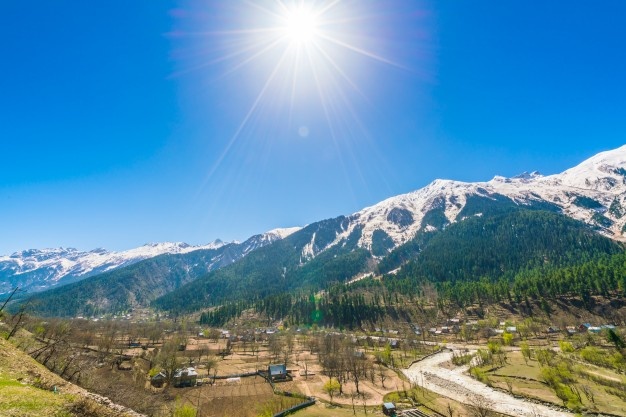Recapturing the Valley: From the Lens of Agha Shahid Ali's Poerty

“Let me cry out in that void, say it as I can. I write on that void: Kashmir, Kaschmir, Cashmere, Qashmir, Cashmir, Cashmire, Kashmere, Cachemire, Cushmeer, Cachmiere, Cašmir. Or Cauchemar in a sea of stories? Or: Kashmir, Kaschemir, Kasmere, Kachmire, Kasmir. Kerseymere?”- Agha Shahid Ali
On his visit to Kashmir in the seventeenth century, Mughal emperor Jehangir was so enchanted by the beauty of the landscape that he uttered these lofty words in its praise “Gar firdaus bar-rue zamin ast, hami asto, hamin asto, hamin ast.” (If there is a heaven on earth, it’s here, it’s here, and it’s here.) This couplet continues to fuel our imagination as it constructs the land of Kashmir as an idyllic space that is untainted by the forces of corruption. Such a conceptualization insulates the image of Kashmir from the grave contemporary realities which are deeply characterized by violence, displacement, and an irreparable sense of loss.
Kashmiri poets are invested in recapturing the valley with its complexities as they are bent on creating a counter-history to the various historical and political accounts of Kashmir which are devoid of any nuanced extrapolation. Ananya Jahanara Kabir talks about the valley as a symbol of desire as this region has been a site of contestation for Indian, Pakistani, and aspiring Kashmiri nationalism. The tedious entanglements of this nationalism have made this region very volatile and turbulent. Ananya examines the collective desires and responses for their homeland by Kashmiri artists and poets as she opines that history should not be investigated merely from the lens of politics and international relations.
The poetry of Agha Shahid Ali attempts to capture the complexities of Kashmir as he intends to reimagine Srinagar on the model of Osip Mandelstam’s reinvention of St. Petersburg as he envisions “an imaginary homeland filling it, closing it, shutting myself in it.” The poem “Postcard from Kashmir” is a classic example to understand the critical nature of Agha Shahid Ali’s conceptualization of his homeland as he writes “This is home. And this is the closest I’ll ever be to home”. Ali traces the trajectory of its past, present and future through the employment of “memory”. He makes an attempt to rebuild his lost home through his imagination and creative composition but he fails to revisit his native place his mental illustration is “imagined and unreal” which is an outcome of his distant and fragmented memory.
Along with the portrayal of the fragmented self, the poetics of Ali is invested in capturing a sense of personal loss at the backdrop of the disputed territory which exists as fractured and discontinuous as he writes “A shadow chased by searchlights is running, Away to find its body.” The vivid imagery of the “shadow” and its hunt to find its “body” exemplifies the intense pain of the Kashmiris who were haunted by the territorial conflict. His imagination of the abject violence and bloodshed is coupled with the poet’s own sense of exile as in the figure of Rizwan; the poet attributes his own sense of identity crises that appears to be his double, the poet’s alter ego, the other self, who stayed in Kashmir. The movement of Rizwan is expressed through the imagery of light and darkness which resonates with the poet’s quest for self-identity in an alien land.
As a cultural ambassador, Agha Shahid Ali constantly addresses the binary of “memory” and “history” by challenging the mainstream history writing through his narrative of personal loss based on memory. His poetics is invested in retrieving the lost narratives through which he writes a counter-history of Kashmir as he poignantly writes,
“I am everything you lost, you won’t forgive me. You won’t forgive me,
My memory keeps getting in the way of your history.”

0 Comments Add a Comment?